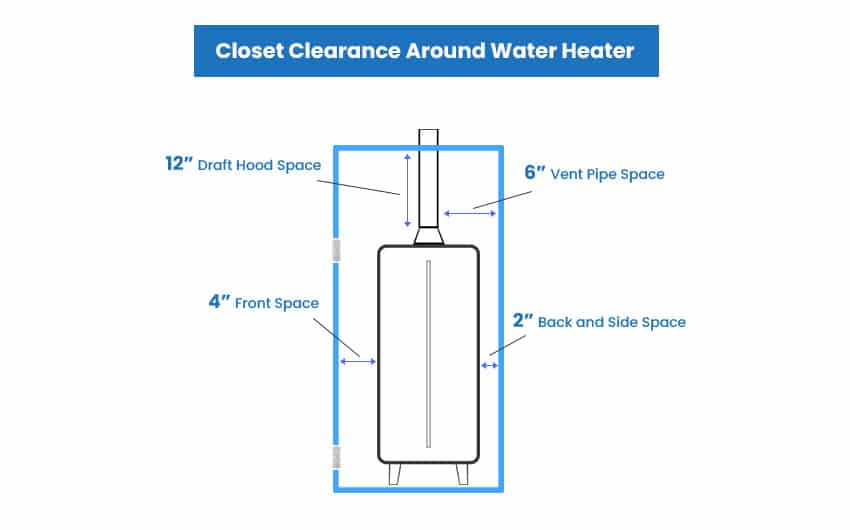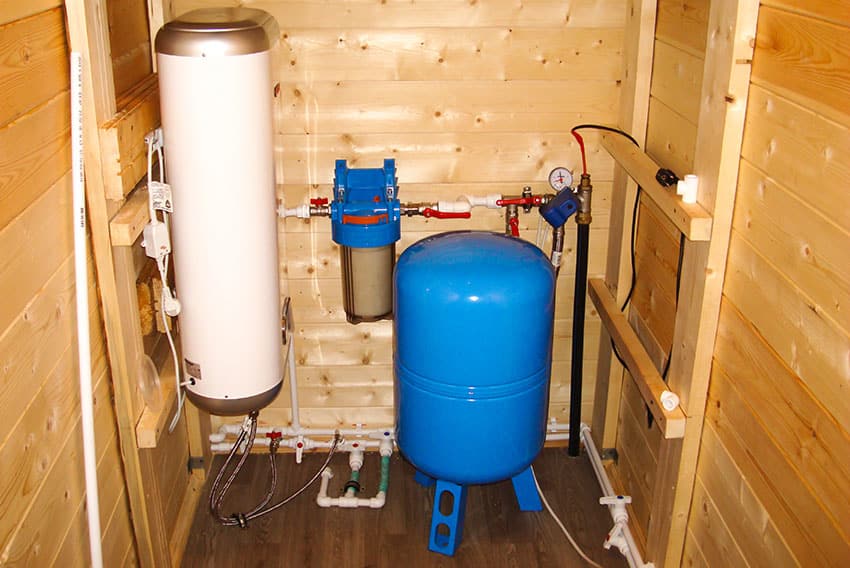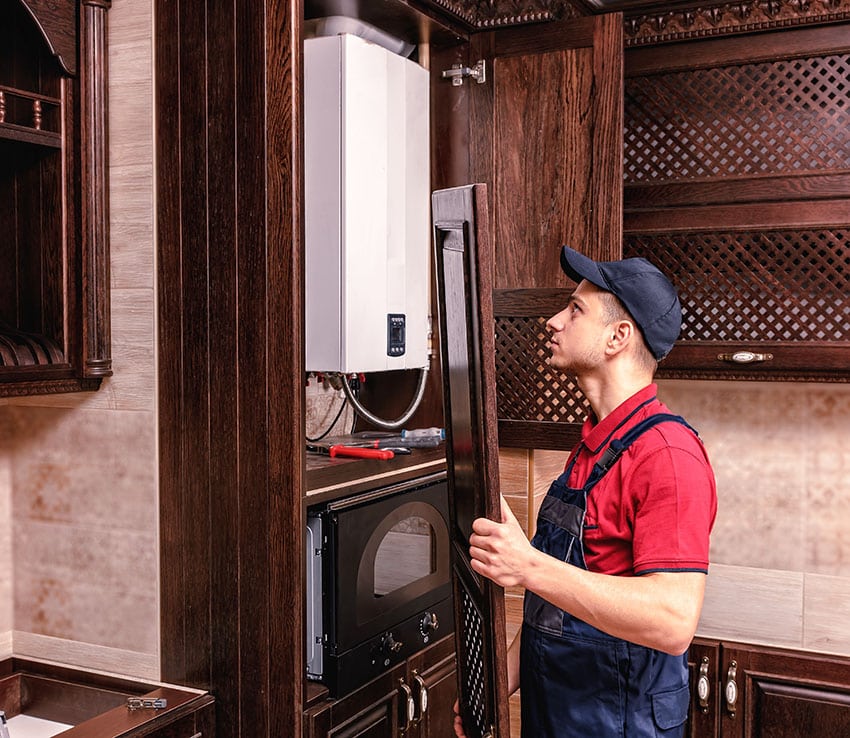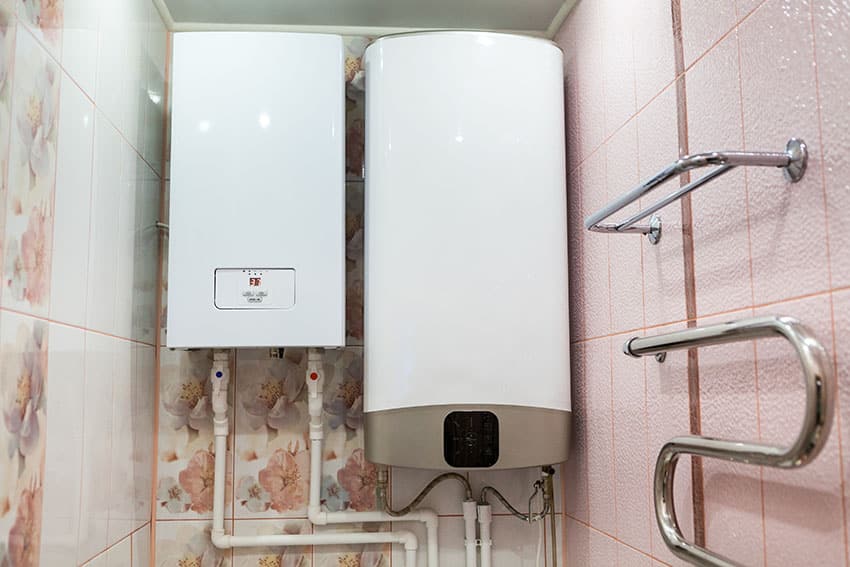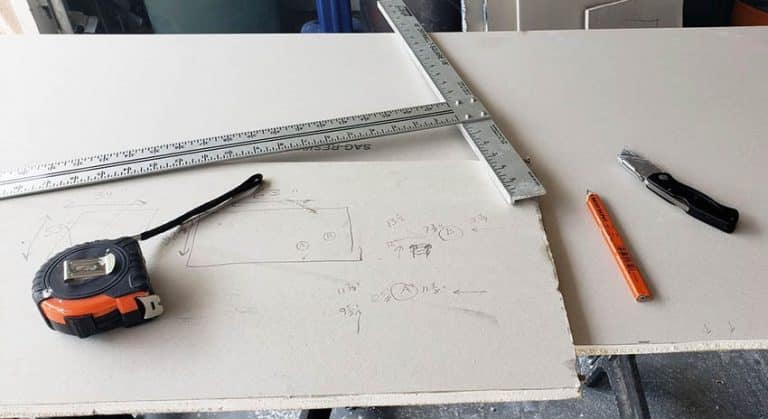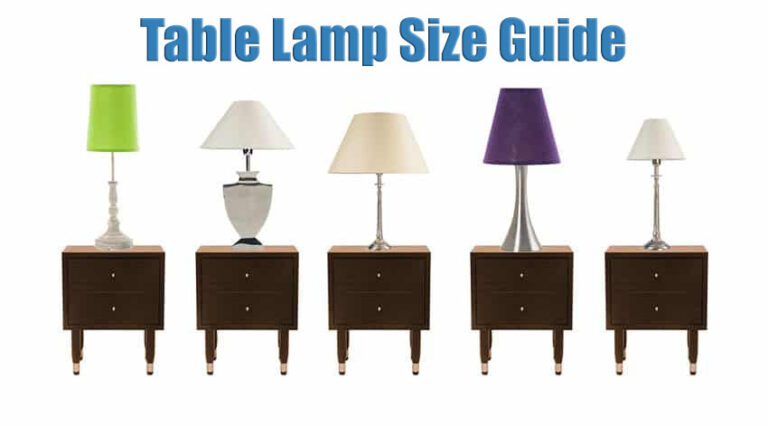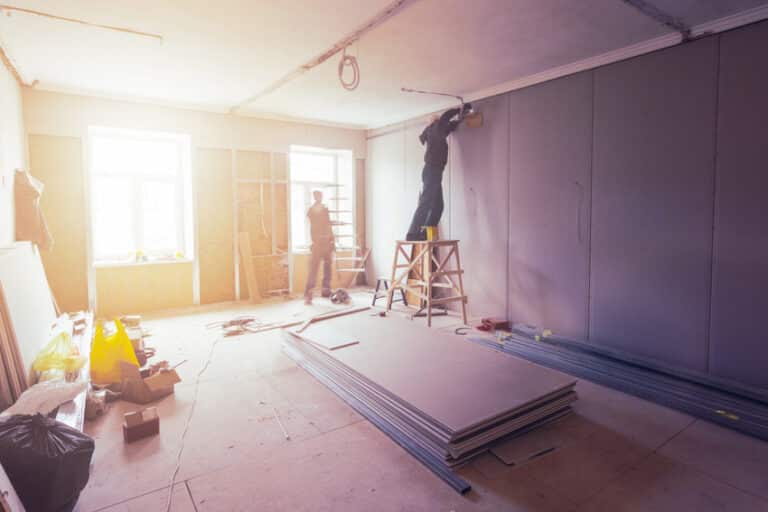What to Know About Water Heater Closet Dimensions
Our water heater closet dimensions guide includes different electric and gas tank sizes and the clearance space needed.
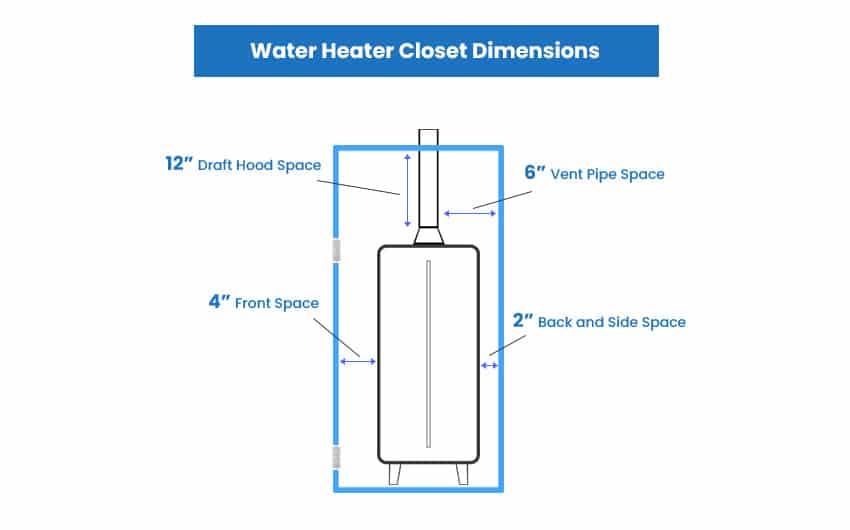
A great way to cover the look of a water tank, especially in houses without a basement, is by installing a closet to go around it. Homeowners must be guided by their local building codes and manufacturer’s requirements to ensure everything runs smoothly when the enclosure is in place. Other than the local building code conditions, other factors must be considered.
Gas Water Heater Closet Dimensions
The closet or enclosure space needed for a gas water heater will depend on your tank’s capacity. Some gas-powered water tanks can hold as little as 30 gallons, while some can contain up to 95 gallons; ultimately, measuring will be required before deciding on the enclosure size.
Clearance Around A Gas Unit
For a gas-powered water tank, the clearance space it will need is 4 inches or 10.16 centimeters on the front inside, with 24 inches of clearance in front of the closet, 6” from the vent pipe, and at least 2 inches or 5 centimeters of space on the sides and the back. The top of the draft hood should have 12” of clearance. (This will depend on local building codes)
Electric Water Heater Closet Dimensions
Just like a gas-powered water tank, the enclosure space needed for an electric unit depends on the exact capacity size of your tank.
Clearance Around An Electric Unit
On the other hand, unlike gas-powered heaters that need venting, electric tanks do not require even a minimal clearance space. This is because they do not release exhaust, unlike their gas-powered counterparts.
What Are The Water Heater Sizes?
The ideal unit for your home will depend on two factors. The first is what energy source your tank will utilize, whether electricity or fuel and the second is the size of the water heater, which will depend entirely on how many people live in a home or a building.
Let’s tackle electric types of water heaters first. If you have a couple of people living in a given household, a 30-gallon heater will be perfect for them.
A 30-gallon water heater usually has a dimensions of 49.5 inches or 126 centimeters in height, a diameter of 22 inches or 56 centimeters, and a weight of 75 pounds or 34 kilograms.
A fifty-gallon electric water heater will be perfect for a household of 3 people. These units usually have a height of 47 inches or 119 centimeters and a diameter of 28 inches or 71 centimeters. They commonly weigh 95 pounds or 43 kilograms without water.
For a household with 4 or more persons, an 85-gallon electric water heater will be ideal for them. Such a tank usually measures 70 inches or 178 centimeters in height with a diameter of 28 inches or 71 centimeters. These water heaters will usually weigh 134 pounds or 61 kilograms.
Many sizes are available if you use gas water heaters for your home. For medium-sized households, there is a water heater with a 50-gallon capacity. They measure 51 inches or 130 centimeters in height, a diameter of 24 inches or 61 centimeters, and weigh at least 160 pounds or 73 kilograms.
For a 75-gallon capacity water heater, they measure to have a height of 60 inches or 153 centimeters, a diameter of 26 inches or 66 centimeters, with a weight of 320 pounds or 145 kilograms.
On the other hand, a bigger 98-gallon capacity heater measures 64 inches or 163 centimeters in height with a diameter of 27 inches or 69 centimeters and a weight of 350 pounds or 159 kilograms.
Can A Water Heater Be In An Enclosed Space?
To answer the question, yes, you can place or store these units in an enclosed space; however, there are factors to consider. These factors will depend on different state codes and the manufacturer’s recommendations.
Most heating system manufacturers recommend that your heater’s enclosed space have at least an inch or 3 centimeter allowance on all sides. However, there are problems regarding this measurement since it won’t allow for much room to work, especially for tubes and drip pan space on the bottom.
If an inch is not enough, add more space on the inside to ensure that the unit can be removed and replaced easily without bumping any wires, buttons, or tubes. Ensure that the enclosure will be strong enough to house the entire tank in its capacity.
Another consideration is that fire-retardant wallboards surround clearances to comply with national building codes.
How Big Does A Hot Water Heater Closet Need to Be?
Whether electric or gas-powered, the ideal enclosure or closet for your water heater will depend on its size. However, specific and exact measurements and considerations are there as a guide to making or having your closet made.
The first requirement is that the doors be double doors so they are easier to access and be placed in and out of the home for replacement or repairs. It is also a building required to keep the doors of this closet closed at all times.
The second point of consideration is the vent space, which is 12 inches 30 centimeters on every side, especially the upper and lower parts of the tank. The third and last consideration is the straps, which should be 4 inches or 10 centimeters away from all the tank’s controls.
Can I Build A Closet Around My Water Heater?
For instance, if you want to cover your water tank, especially for a basement, with a purpose other than storage, the best way to conceal the view of your giant tank is by building a shell or a closet around it. This is also the solution if your tank has a bigger capacity and is thus more extensive in build.
Once you have decided to build a closet around your heating tank, it’s time to plan the enclosure. You must remember to leave enough buffer space of at least 6 inches or 15 centimeters from the wall to the back of your tank. This is to ensure that there will be enough space for the repairman to repair your heating unit in any case of malfunction.
Another thing is opting for double doors instead of a single door that only opens on one side. This double door will provide the space your water heater needs to be maneuvered in and out of the tank on replacement and repairs.
A gas-powered heater will require more space to give the tank enough room to breathe to burn effectively.
How High Does A Water Heater Have To Be Off the Ground?
Aside from the space allowance on the sides and front and back of the closet, a water tank, especially gas-powered, would require at least 18 inches or 46 centimeters of space above the ground. To achieve this, you can buy a heating unit stand or make it custom, especially if you have a bigger tank.
Remember that these 18 inches or 46 centimeters do not start on the bottom of the water tank. Instead, this space clearance begins on the pilot light or any lighting mechanism on the bottom part of your tank.
You might wonder why this space is necessary, and contrary to the popular belief that it is there to avoid impact and bumps, the space clearance is there for fire and explosion prevention—accidents brought about by gas spills.
This space requirement may not be needed if you own an electric-powered heating tank. However, read the manufacturer’s recommendation just to be sure.
Does Electric Water Heater Closet Need To Be Vented?
The answer can be yes or no, depending on whom you ask and your situation. The water heater needs air space of at least 12 inches or 30 centimeters on every side of the heater. This is to ensure that the heater can have proper ventilation and combustion.
According to the building code, this airflow should be specific to what the heating unit’s brand will advise its users.
However, the safe bet allows for 12 inches or 30 centimeters of space at the top of the enclosure and on the bottom, considering the 18 inches or 46 centimeters for the stand.
How Do You Strap A Water Heater In A Closet?
Another way to ensure that your water heater is secure is by strapping it using commercially made kits that make the process accessible for everyone. If you want to do it by yourself using materials from scratch, all you will need are 3-inch lag screws and heavy-gauge metal straps.
The first thing you need to do is strap the tank on the wall by wrapping a strap on the tank and strapping the metal belt on the wooden block placed between the wall and the tank by wall studs or lag screws.
If you are strapping it without the wood in between and straight to the concrete, then using expansion bolts that are a quarter-inch is ideal.

